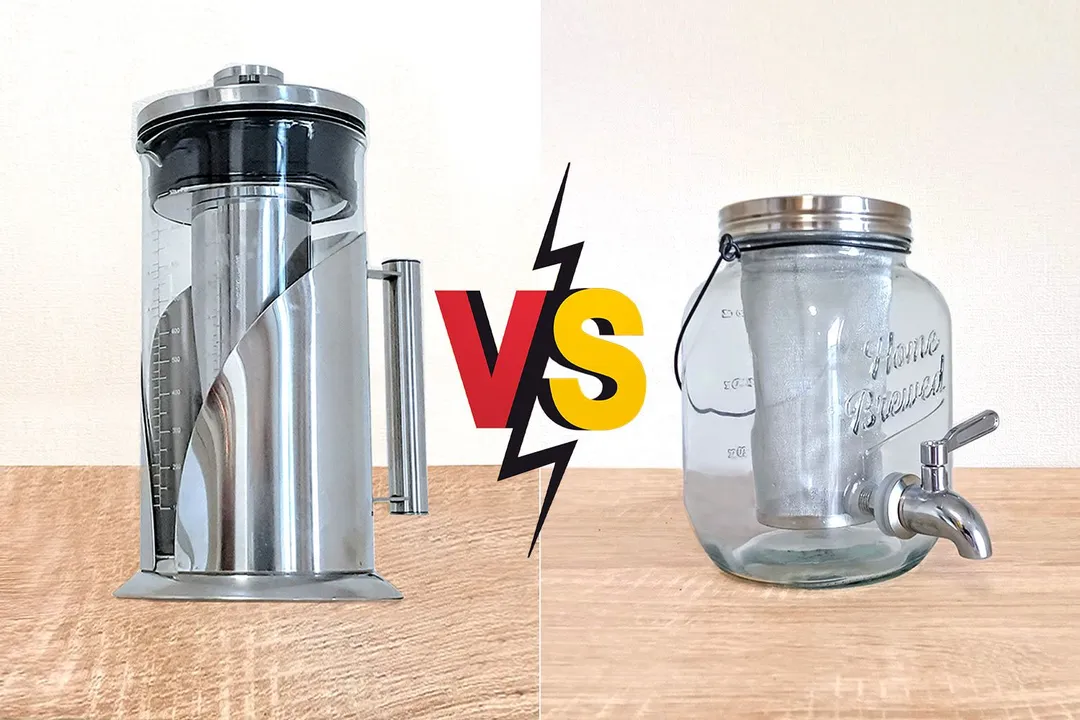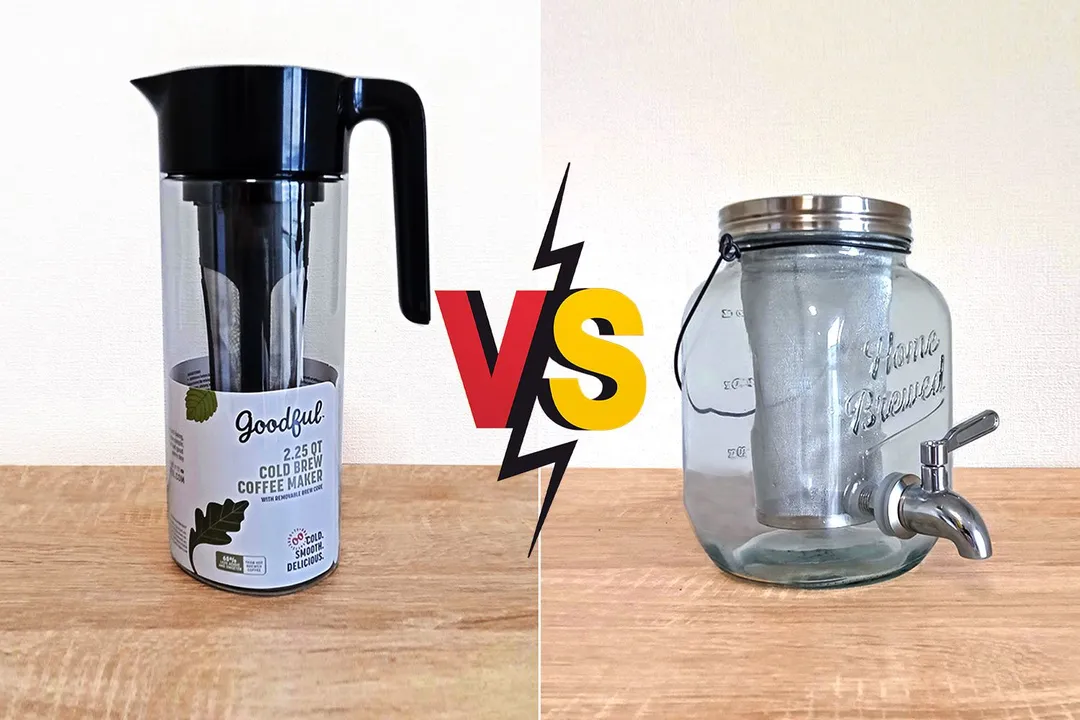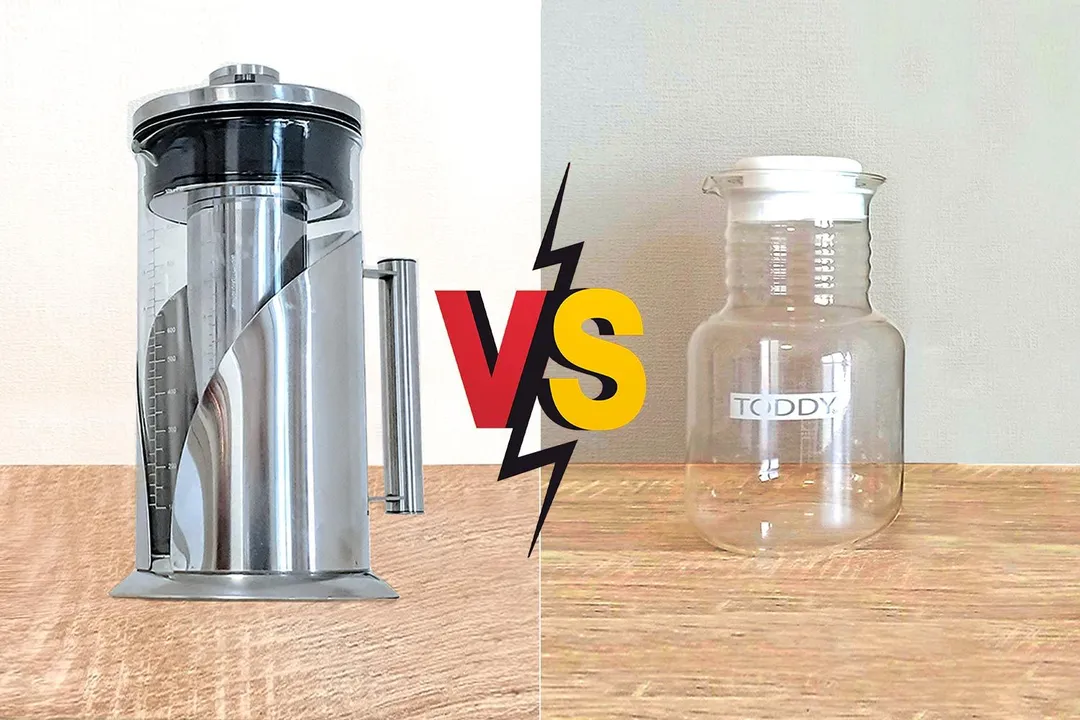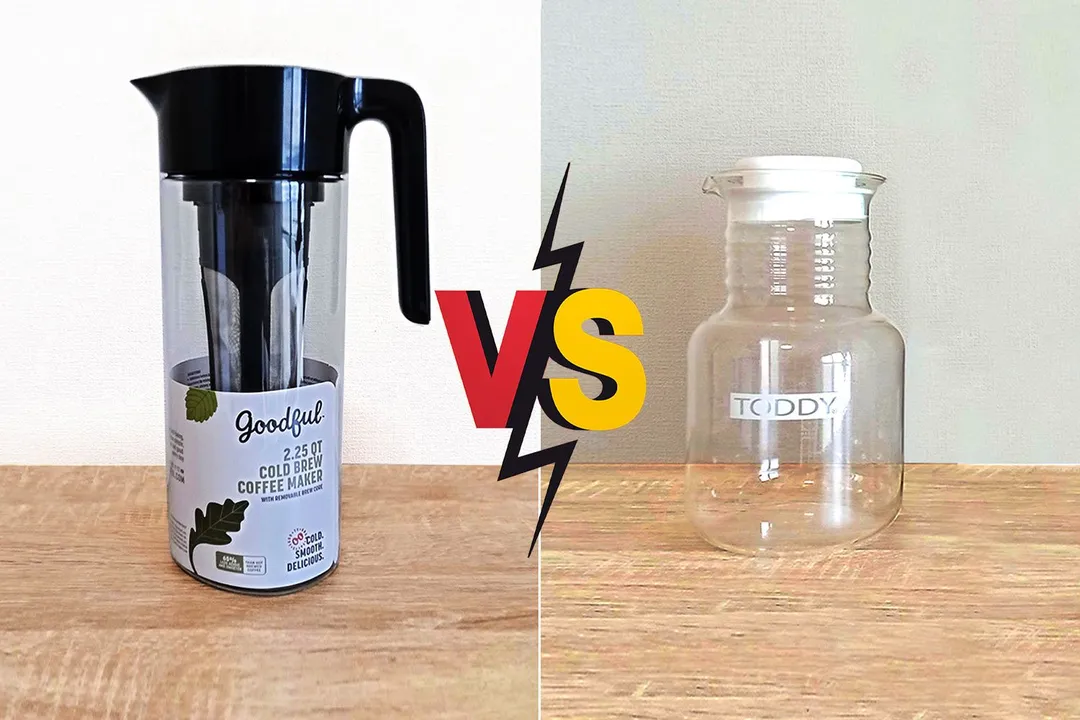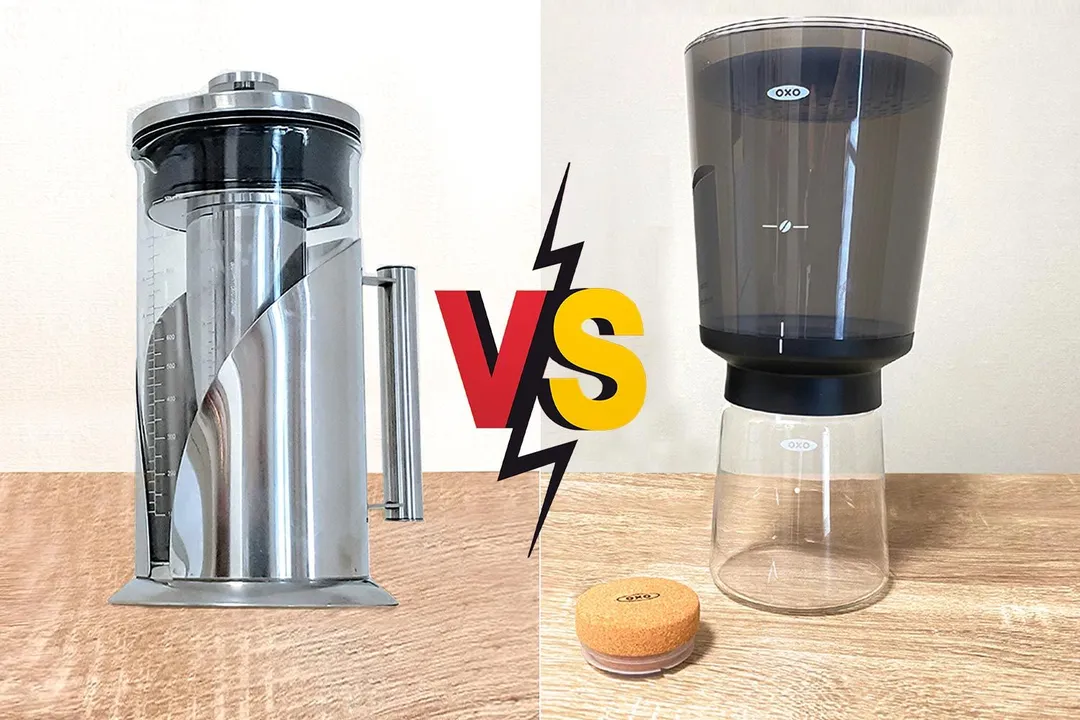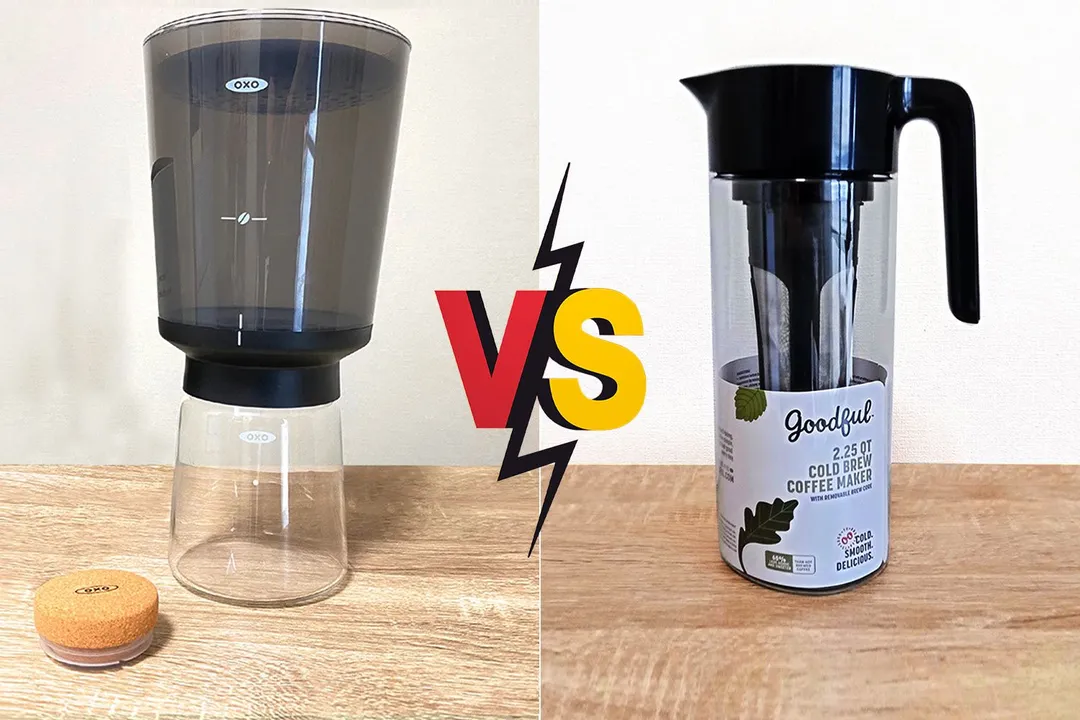Our recommendations are made independently through Research & Testing. We may receive commissions from purchases made via our links.
Cafe Du Chateau vs Goodful Side-by-Side Comparison
Cafe Du Chateau cold brew coffee maker vs Goodful. One brewer is substandard, the other satisfactory. Find out which is which.
Cafe Du Chateau
Tested Using Methodology v1.0Goodful
Tested Using Methodology v1.0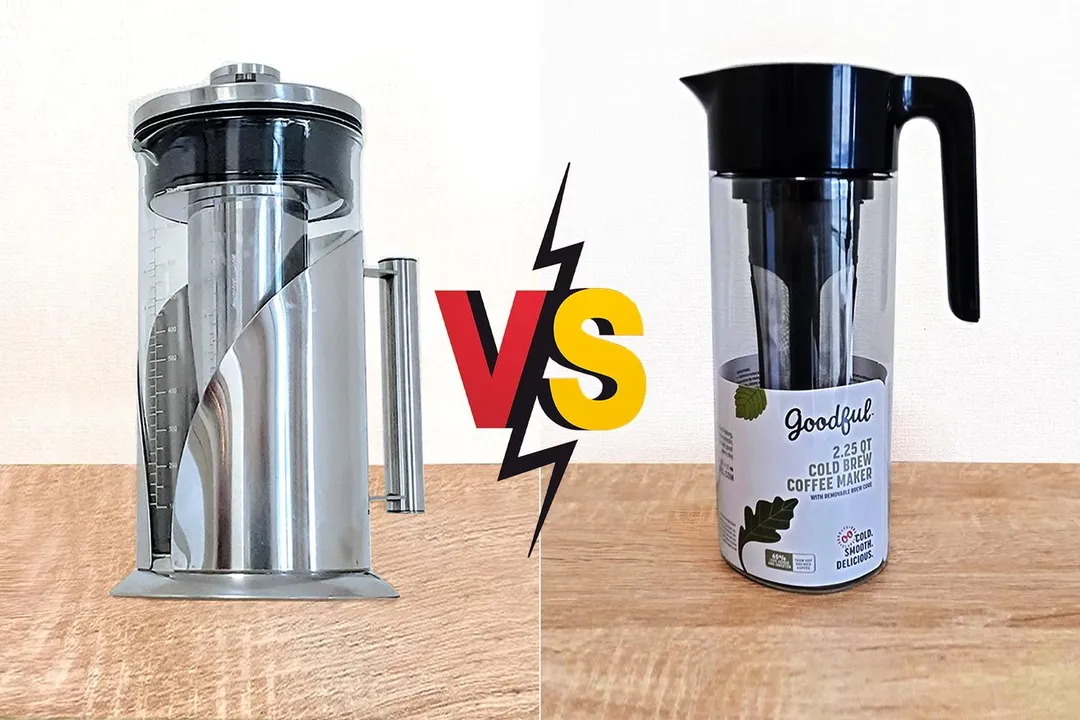
Overall Verdict
The Cafe Du Chateau, as the name suggests, is a take on a French press coffee maker design. Apart from the French press ‘look’ it doesn’t use a typically hand-pressed filter but is a rather incongruously-designed immersion filter. The brew quality lacks character, it is cumbersome to pour, and the stopper design is flawed.
The Goodful, on the other hand, is a better proposition. It’s a large-sized plastic jug brewer that brews in the door bin of your refrigerator. While the brew quality is satisfactory, the lid design is clunky. A similar, but better quality design to the Goodful is the Takeya. Regardless, the Cafe Du Chateau is not a coffee maker we’d recommend.
Pros & Cons
- No plastics used
- Airtight brewing
- Well-machined filter
- Durable
- Removable filter base
- Turn-to-pour lid
- Weighty and unbalanced
- Lid stopper tough to remove
- Loose decanter lid
- Cumbersome silicone seals
- Not a good fit for small refrigerators
- Clunky lid
Key Specs
Where to Buy
*You help support HealthyKitchen101's product testing and reviews by purchasing from our retail partners.
Analysis and Test Results
Brew Quality
Bouquet
Drinkability
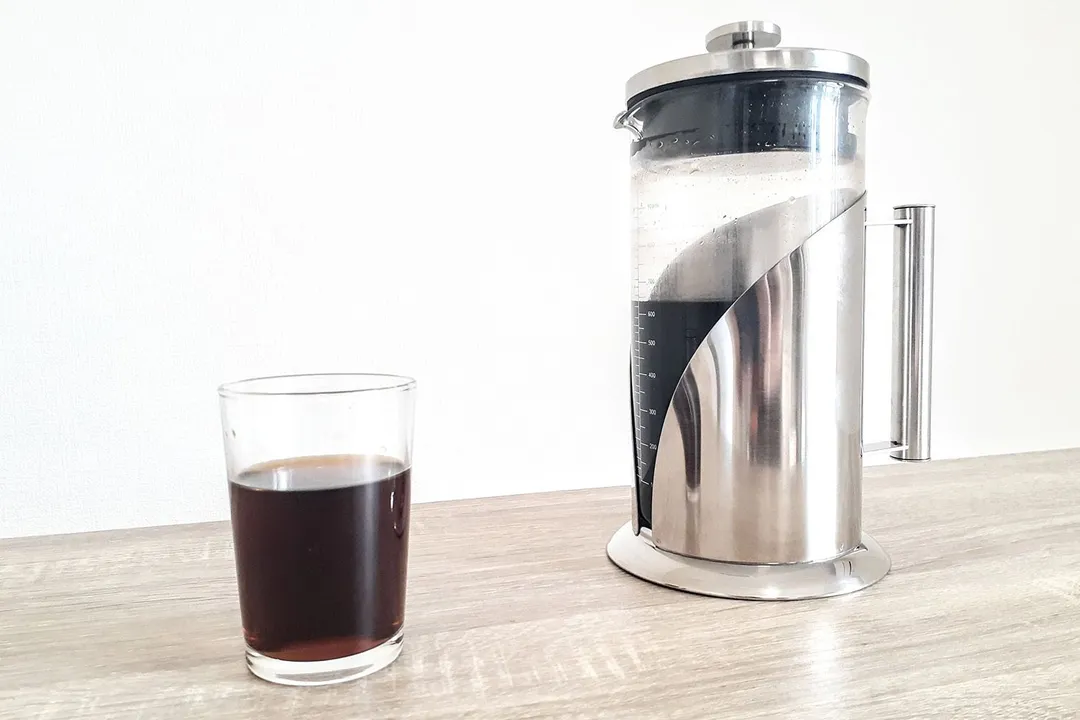
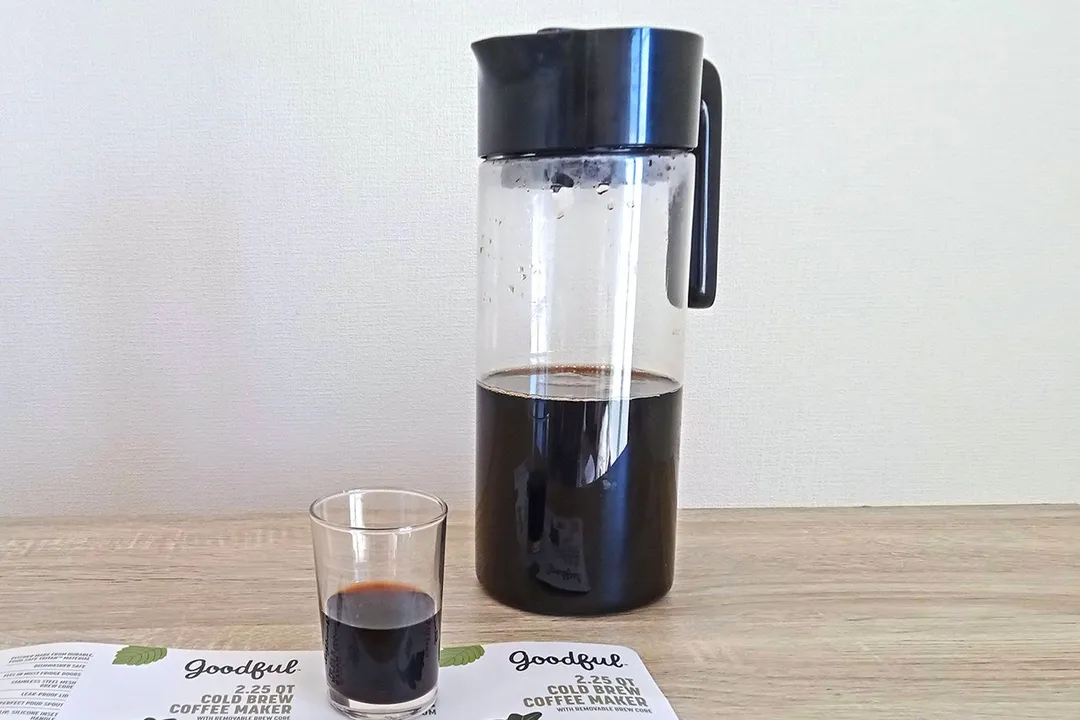
Sediment
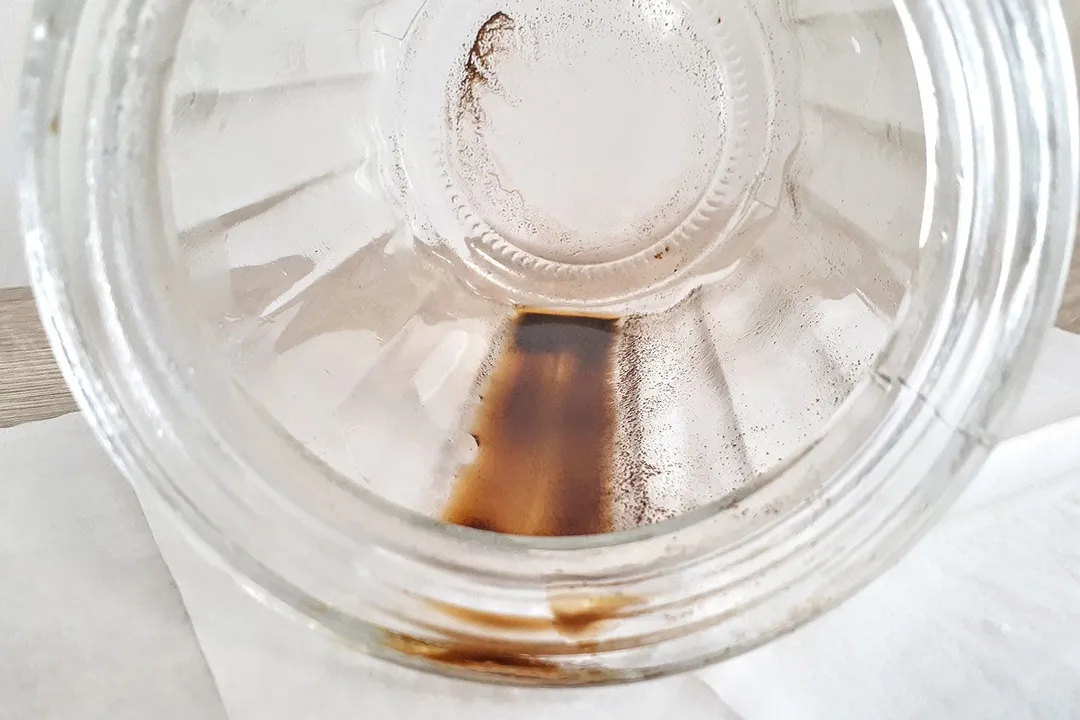
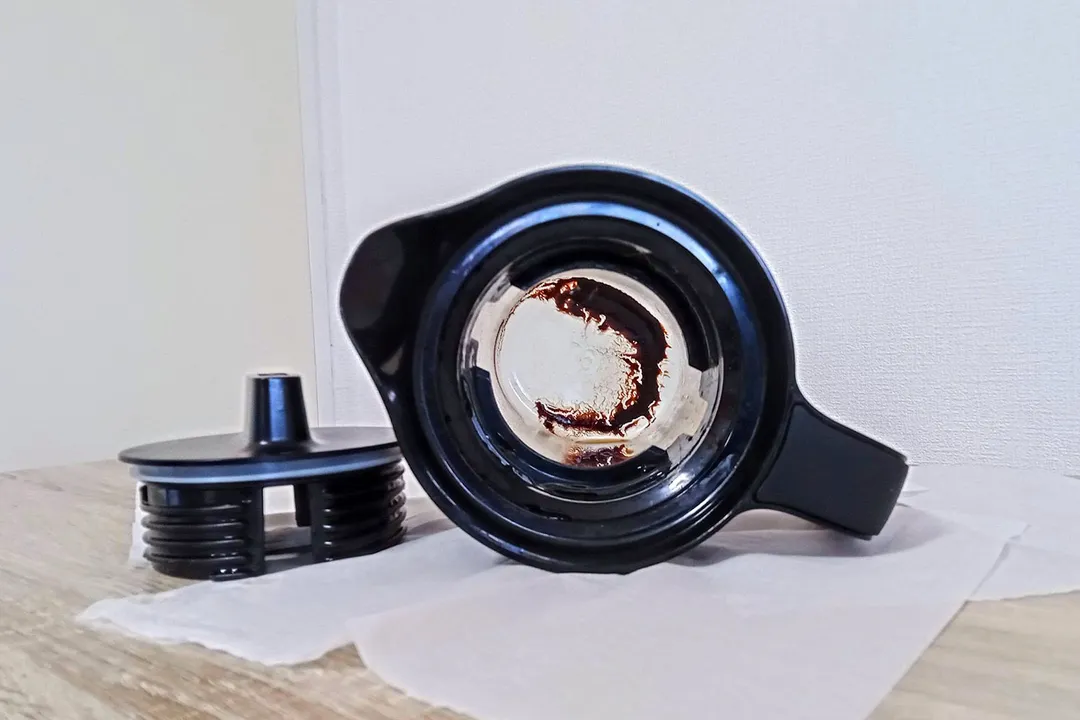
Design
In the Box
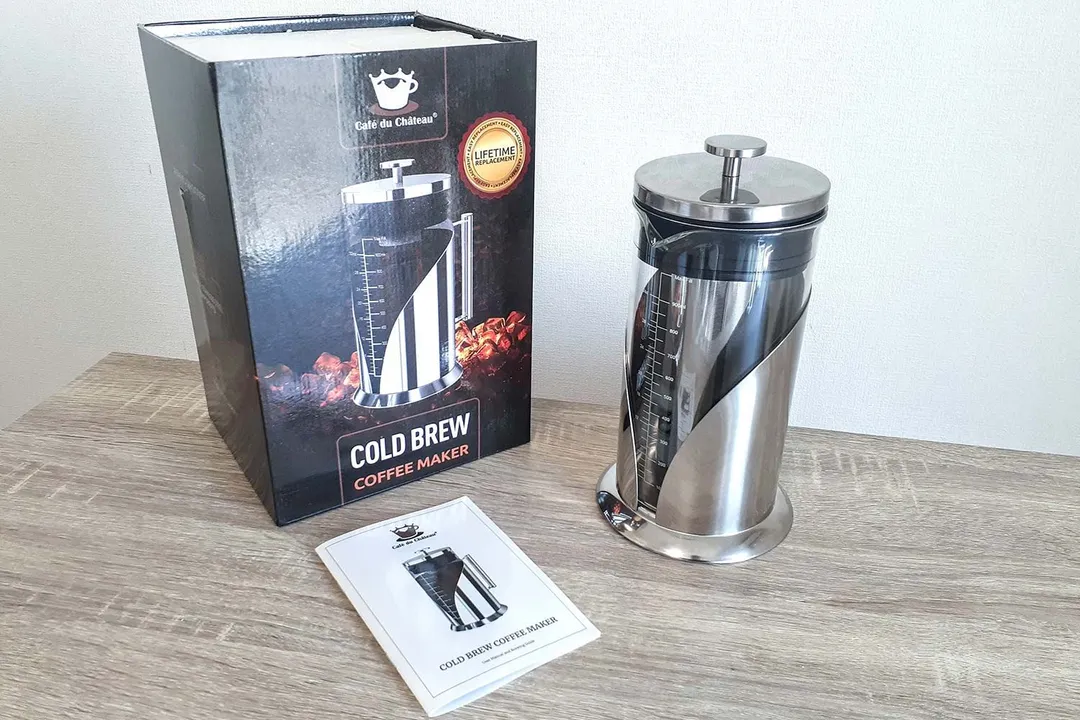
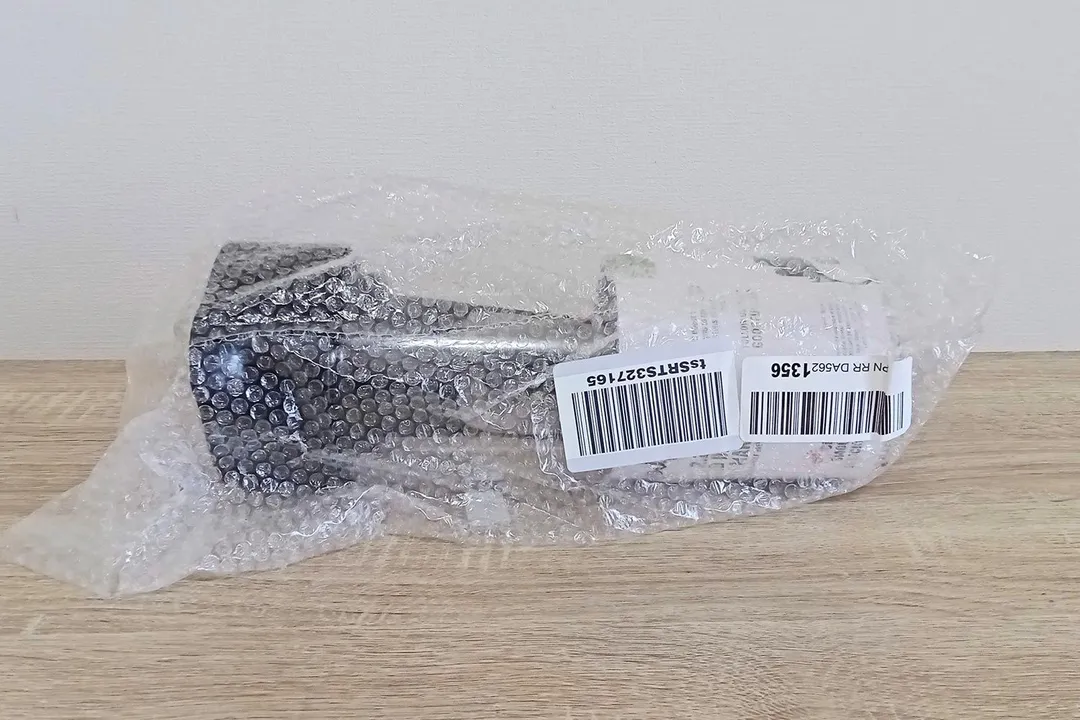
Decanter
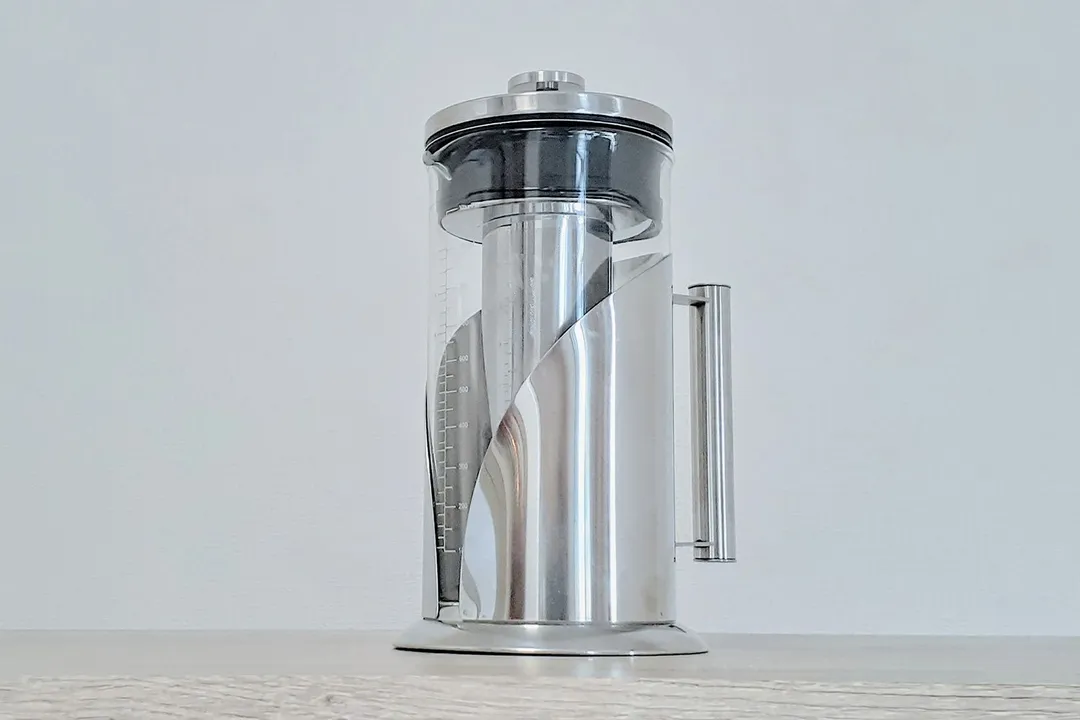
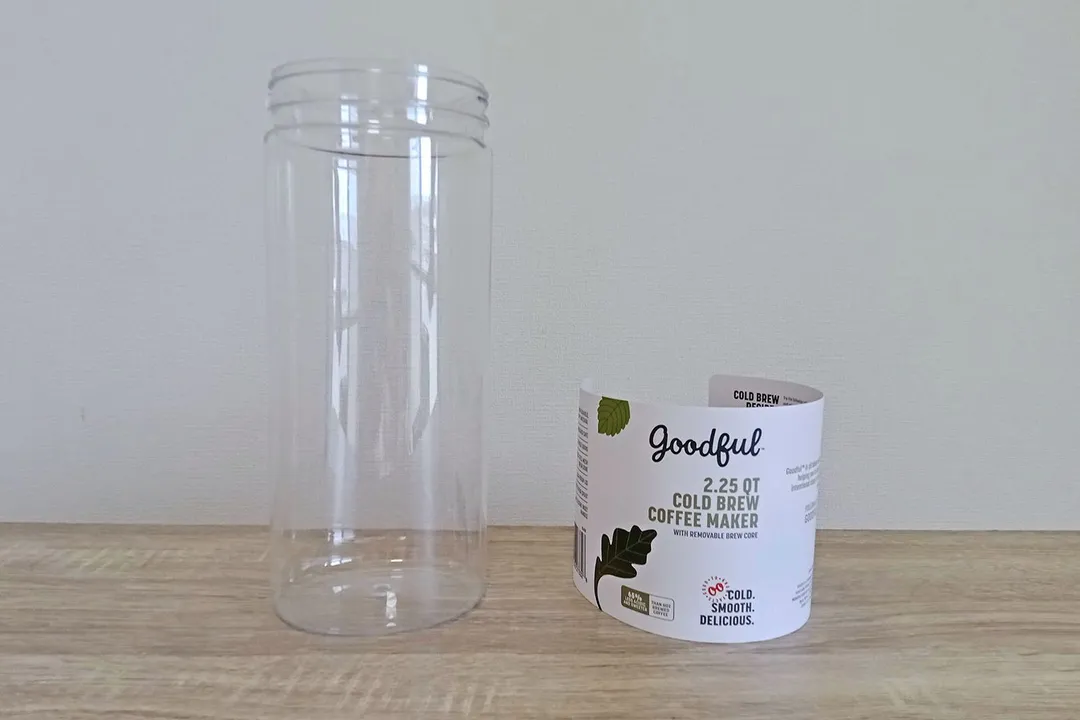
Stopper / Lid

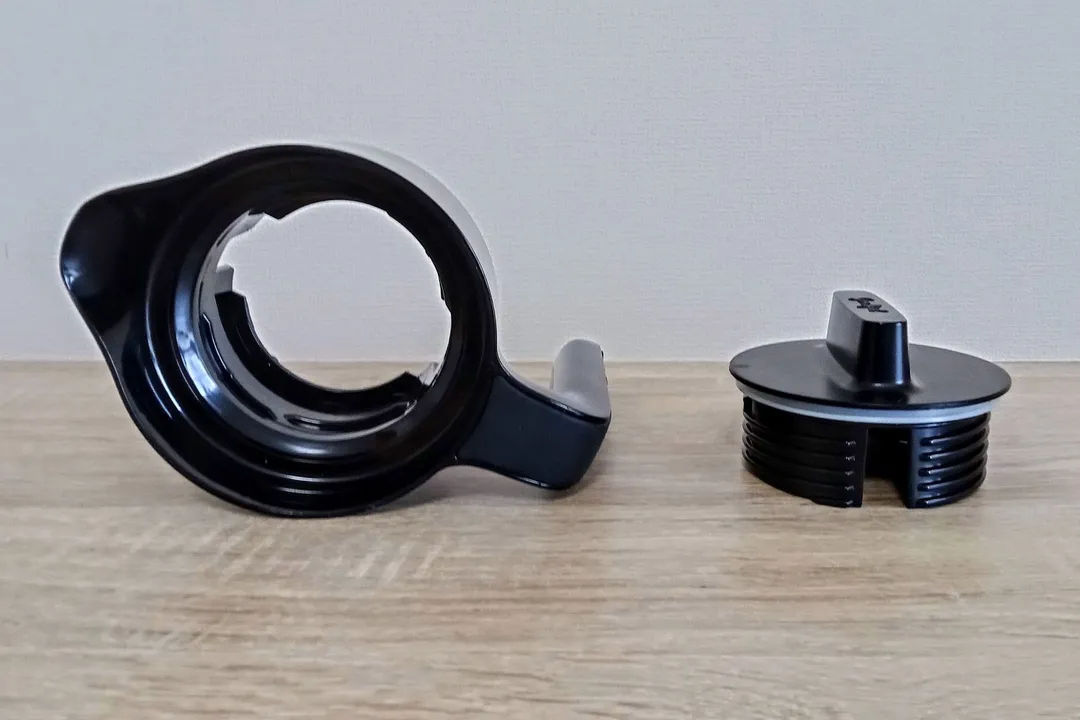
Filter


Build Quality
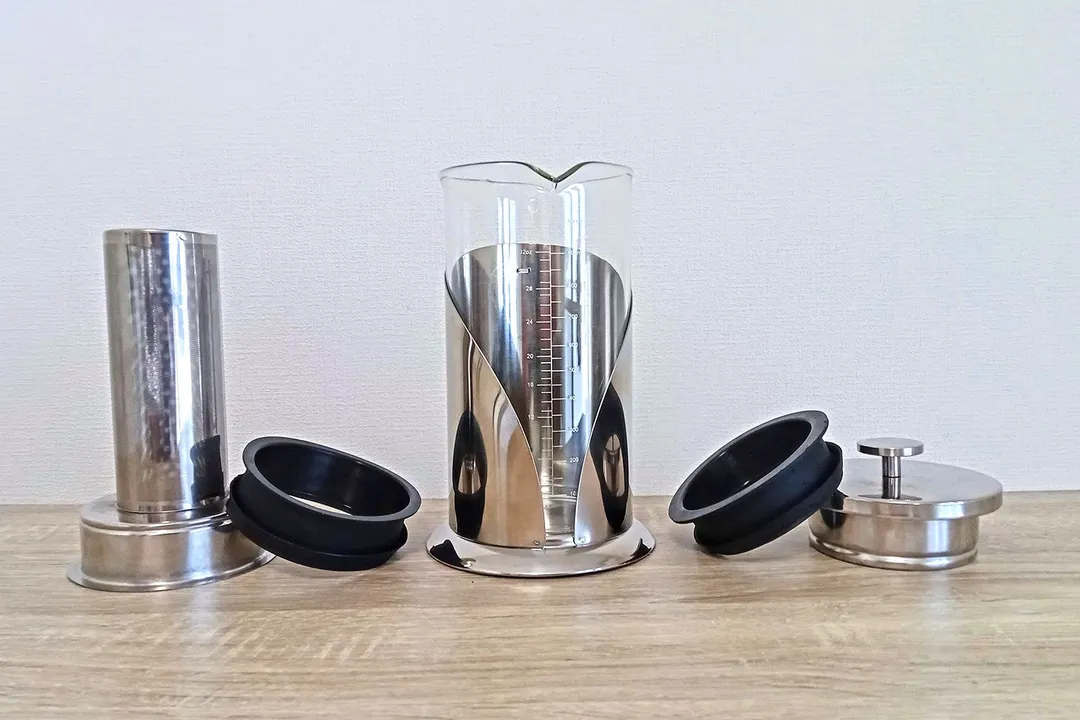

Usability
Brewing


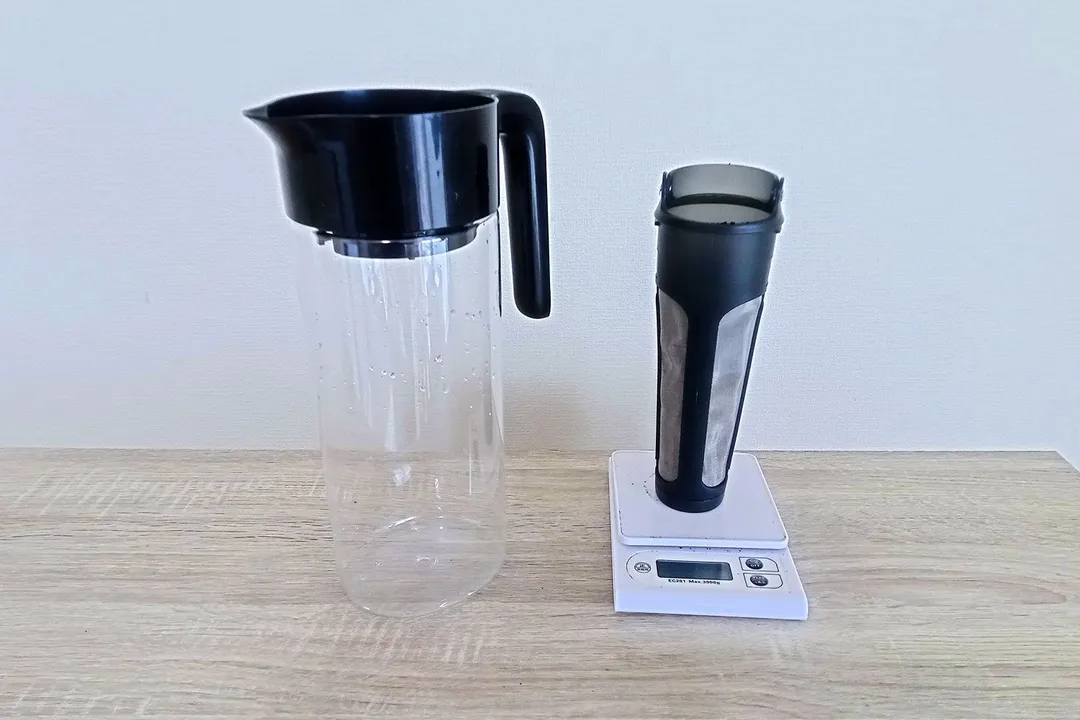
Decanting
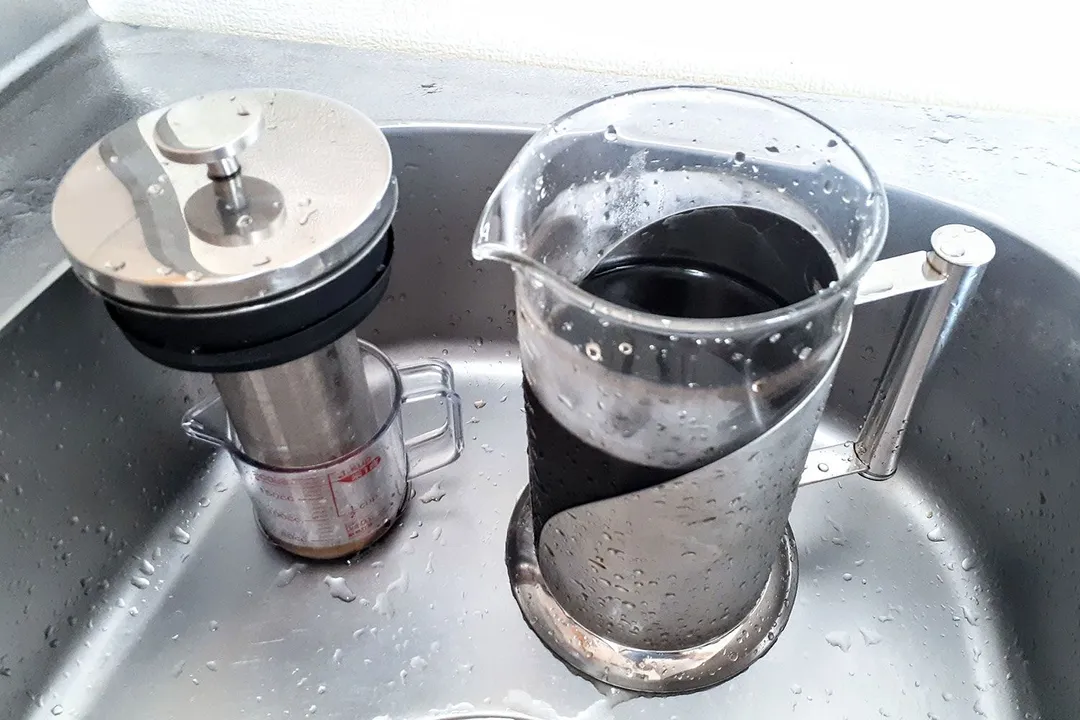
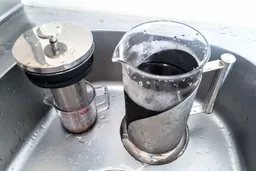
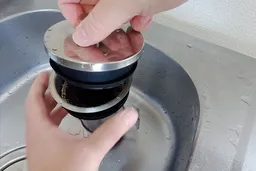
Cleaning and Storage


Behind the Comparison
Roger Shitaki is a writer, author, and editor. His niches are household appliances, health & wellness, and travel. He’s a freelance contributor to a Tokyo lifestyle website and a leading ophthalmology magazine in Asia.

